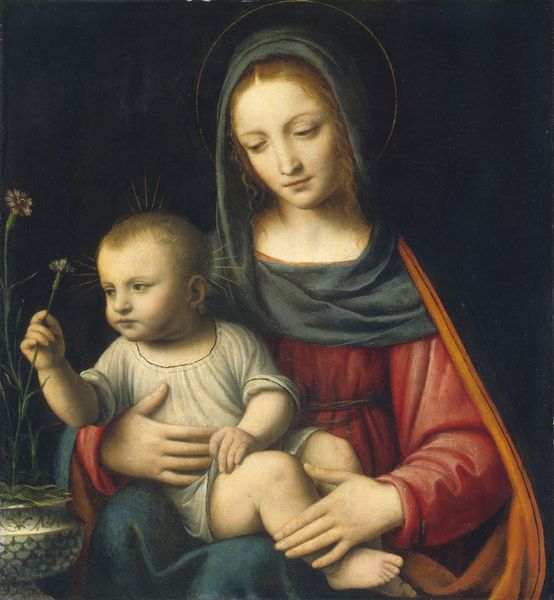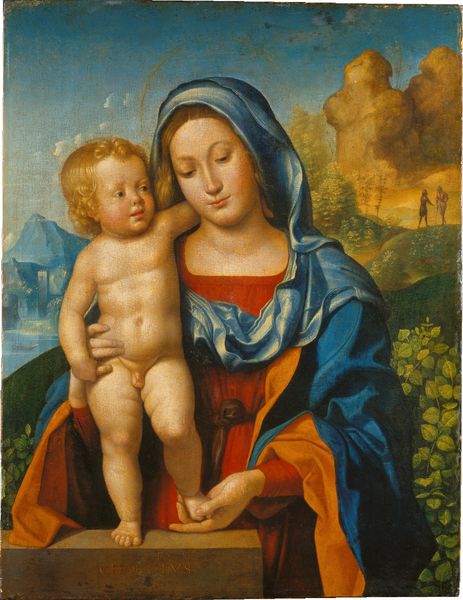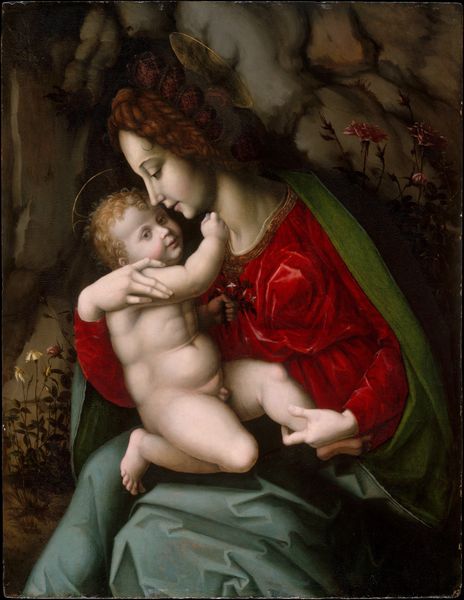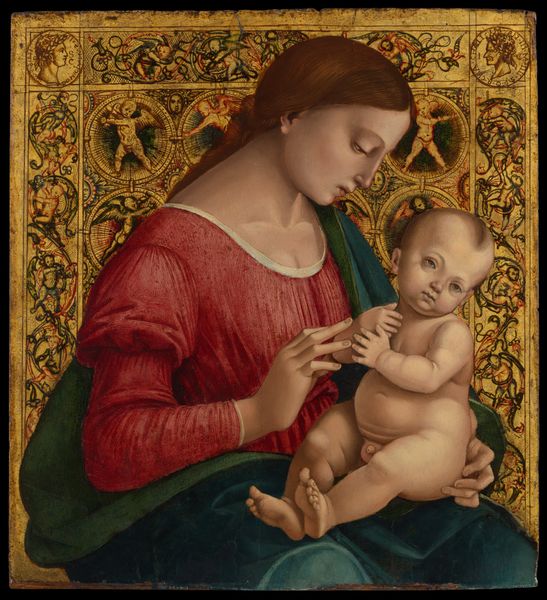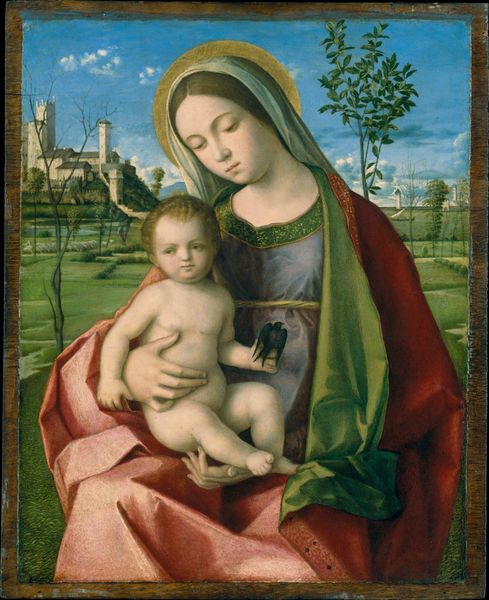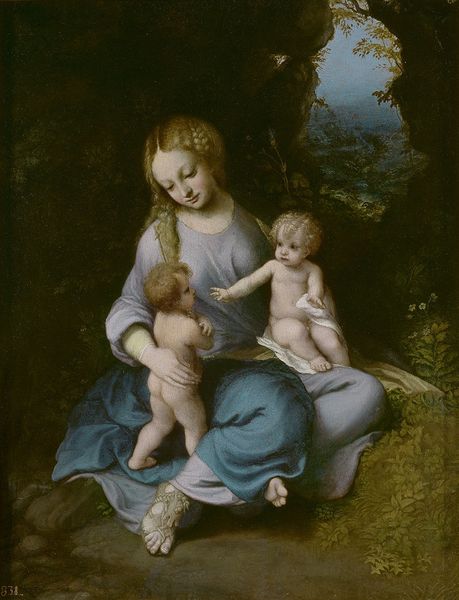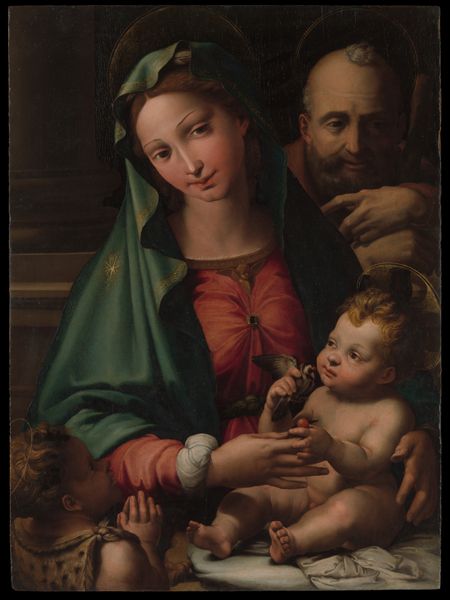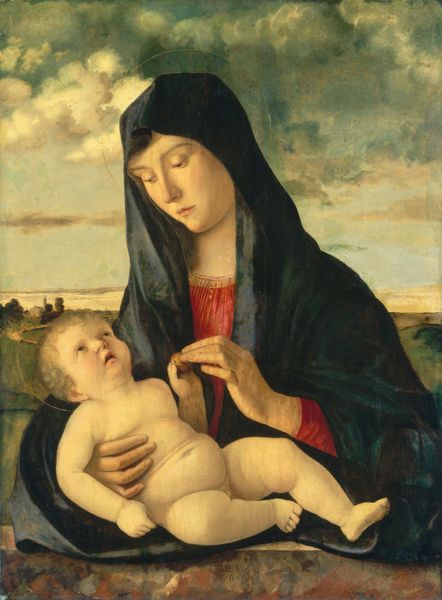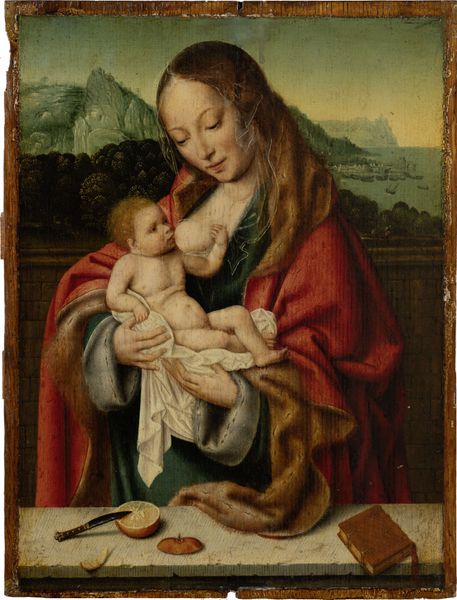
Madonna and Child 1515 - 1525
0:00
0:00
oil-paint
#
portrait
#
high-renaissance
#
oil-paint
#
figuration
#
oil painting
#
italian-renaissance
#
portrait art
Dimensions: 34 1/8 x 25 3/8 in. (86.7 x 64.5 cm)
Copyright: Public Domain
Editor: This is Francesco Granacci's "Madonna and Child," dating from around 1515-1525. It's an oil painting, and it strikes me as a very tender, almost domestic portrayal. What do you see in this piece, particularly within its historical context? Curator: I see a negotiation of power, representation, and idealized womanhood embedded within its seemingly simple composition. Consider the period – the High Renaissance wasn’t just about aesthetics; it was deeply enmeshed with patriarchal structures. How does the Madonna, the archetypal mother, reinforce or challenge these structures? Is she simply an idealized figure, or does Granacci offer subtle critiques through her gaze or posture? Editor: That's interesting, I hadn't considered it that way. I just saw the softness, the embrace. But thinking about power dynamics, I notice the Child is holding what appears to be a small cross - does that hint at a future sacrifice? Curator: Precisely. The symbol of the cross is about the inevitable destiny of Christ, sacrifice and suffering. However, isn't the very act of depicting motherhood as divine potentially empowering? How might contemporary feminist scholars interpret the representation of Mary, not just as a religious icon, but as a woman embodying strength and resilience, albeit within prescribed roles? Think about the societal expectations placed on women, particularly regarding motherhood, even today. Does this painting speak to those continuities, those challenges? Editor: So, it's more complex than just a pretty picture. It’s a snapshot of a society grappling with identity, religion, and gender roles, all within this intimate scene? Curator: Exactly! By looking at the "Madonna and Child" through a lens informed by intersectional feminist theory, we can unlock deeper understandings about its historical resonance and its continued relevance. The painting allows us to think through how we think about not just religion and identity but about women in positions of religious leadership or power in any societal hierarchy. Editor: This really opens my eyes to how much context can influence how we interpret art. Curator: Indeed, it reminds us that art doesn’t exist in a vacuum, but speaks directly to and from the societies that create it.
Comments
No comments
Be the first to comment and join the conversation on the ultimate creative platform.

